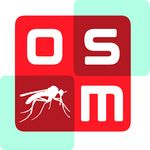OpenSourceMalaria:Triazolopyrazine (TP) Series: Difference between revisions
| Line 20: | Line 20: | ||
The authors made the following summary of their work on the triazolopyrazine series: | The authors made the following summary of their work on the triazolopyrazine series: | ||
''We have made compounds in this series down to 16nM potency. The series also seems to have good in vitro HLM and hHEP stability Clint < 8.1 is compatible with 10nM potency. However, RLM remains stubbornly high, particularly for the more potent analogues translating to short half-lives in rat PK. The series also appears to have little polypharmacology or cytotoxicity. | "''We have made compounds in this series down to 16nM potency. The series also seems to have good in vitro HLM and hHEP stability Clint < 8.1 is compatible with 10nM potency. However, RLM remains stubbornly high, particularly for the more potent analogues translating to short half-lives in rat PK. The series also appears to have little polypharmacology or cytotoxicity. The project has so far not challenged the hypothesis that rat metabolism may not be a great model for human metabolism for this series.''" | ||
The project has so far not challenged the hypothesis that rat metabolism may not be a great model for human metabolism for this series.'' | |||
The contents will gradually become part of this wiki (below) as the project progresses. | The contents will gradually become part of this wiki (below) as the project progresses. | ||
Revision as of 03:52, 10 September 2013
Open Source Malaria Series 4: The Triazolopyrazine (TP) Series
Introduction
Preamble
The Triazolopyrazine series is the newest of the OSM series. It was announced on September 10th 2013 as Series 4.
The series arises from industrial work that cannot be fully disclosed which was followed by some hit-to-lead work funded directly by MMV which can.
There is evidence from parasite ion regulation assays (below) that these compounds may be PfATP4 inhibitors. Such evidence distinguishes Series 4 from Series 1-3 where there was no experimental evidence for a mechanism of action.
As with everything involved in OSM, suggestions can be given in multiple ways.
What is Known at the Start of the Campaign
A briefing document written for MMV constitutes what was known at the start of the open project. The authors made the following summary of their work on the triazolopyrazine series:
"We have made compounds in this series down to 16nM potency. The series also seems to have good in vitro HLM and hHEP stability Clint < 8.1 is compatible with 10nM potency. However, RLM remains stubbornly high, particularly for the more potent analogues translating to short half-lives in rat PK. The series also appears to have little polypharmacology or cytotoxicity. The project has so far not challenged the hypothesis that rat metabolism may not be a great model for human metabolism for this series."
The contents will gradually become part of this wiki (below) as the project progresses.
The raw data behind the briefing document will be released when it is obtained. New ion regulation assay data has already been received (below).
What Can the Community Do Now?
Those wishing to contribute to OSM Series 4 should in the first instance read the briefing document. The first question is: Which 10 compounds ought to be made in Sept/Oct 2013 for evaluation?
Resources Needed: Chemists to either make new molecules, or help obtain existing compounds that might be relevant to this series.
Current Aims
1. Hit-to-lead synthesis and biological evaluation, to improve potency and drug likeness.
2. Validation of PfATP4 activity.
Current Questions for the Community
Starting-point questions are listed at the end of the briefing document. These translate into the initial question of Which 10 compounds ought to be made first? (also asked here and Does anyone possess compounds that could be relevant to this series already? (asked here and there is a separate section for results below).
Prior Knowledge of the Series
Potency of Hits and Analogs
(Detail will be placed here, but for the moment please browse the briefing document).
Possible PfATP4 Activity Deduced from Parasite Ion Regulation Assays
The following five compounds were evaluated in parasite ion regulation assays in the Kirk Laboratory; the hypothesis is that PfATP4 is a Na+ ATPase that exports Na+ and imports H+ (or equivalent) and that the effects of the compounds on Na+ concentration and pH are attributable to inhibition of this activity. Structures, potency, metabolism/solubility and raw PfATP4 assay data are here.

MMV669000: no (potency: inactive)
MMV669304: yes (potency: 280 nM)
MMV669360: yes (potency: 356 nM)
MMV669542: yes (potency: 185 nM)
MMV669848: yes (potency: 114 nM)
MMV669000 did not dissipate the plasma membrane Na+ gradient or increase the plasma membrane pH gradient consistent with it not inhibiting PfATP4 at the concentration tested.
The other compounds dissipated the plasma membrane Na+ gradient and increased the plasma membrane pH gradient at a concentration of 2 μM, consistent with them being PfATP4 inhibitors.
(i.e. note the correlation: compound inactive in these assays is the inactive analog in the plasmodium screen)
Other Sources of Compounds in this Series
Strings for Google
Use this section to paste strings to make the page more discoverable.
MMV669000: O=C(N1CC(C=CC=C2)=C2C1)C3=CN=CC4=NN=C(C5=CC=C(OC(F)F)C=C5)N43; InChI=1S/C21H15F2N5O2/c22-21(23)30-16-7-5-13(6-8-16)19-26-25-18-10-24-9-17(28(18)19)20(29)27-11-14-3-1-2-4-15(14)12-27/h1-10,21H,11-12H2
MMV669304: FC(F)OC(C=C1)=CC=C1C2=NN=C3C=NC=C(CCCC4=CC=CC=C4)N32; InChI=1S/C21H18F2N4O/c22-21(23)28-18-11-9-16(10-12-18)20-26-25-19-14-24-13-17(27(19)20)8-4-7-15-5-2-1-3-6-15/h1-3,5-6,9-14,21H,4,7-8H2
MMV669360: FC(F)OC(C=C1)=CC=C1C2=NN=C3C=NC=C(COCC4=CC=C(F)C(F)=C4)N32; InChI=1S/C20H14F4N4O2/c21-16-6-1-12(7-17(16)22)10-29-11-14-8-25-9-18-26-27-19(28(14)18)13-2-4-15(5-3-13)30-20(23)24/h1-9,20H,10-11H2
MMV669542: FC(F)OC(C=C1)=CC=C1C2=NN=C3C=NC=C(C(NC4=CC=CC(Cl)=C4)=O)N32; InChI=1S/C19H12ClF2N5O2/c20-12-2-1-3-13(8-12)24-18(28)15-9-23-10-16-25-26-17(27(15)16)11-4-6-14(7-5-11)29-19(21)22/h1-10,19H,(H,24,28)
MMV669848: FC(F)OC(C=C1)=CC=C1C2=NN=C3C=NC=C(CN4CC(C=CC=C5)=C5C4)N32; InChI=1S/C21H17F2N5O/c22-21(23)29-18-7-5-14(6-8-18)20-26-25-19-10-24-9-17(28(19)20)13-27-11-15-3-1-2-4-16(15)12-27/h1-10,21H,11-13H2
